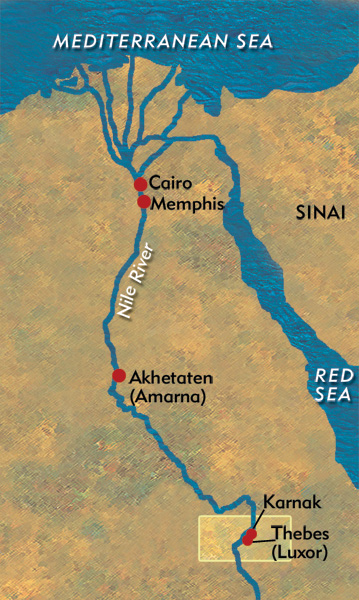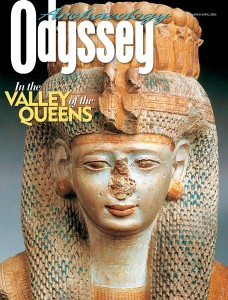“Place of the Beautiful Ones”
When Egyptian Queens Got Elaborate Tombs of Their Own

A sudden, dramatic change in Egyptian queens’ burials occurred at the beginning of the 19th Dynasty (1292–1190 B.C.). On the west bank of the Nile at Thebes, a Y-shaped valley that had served as a cemetery for male officials was adapted as a burial place for royal women. The necropolis was then re-named the Place of the Beautiful Ones (Ta Set Neferu),1 echoing the site’s modern name: the Valley of the Queens.

Now Egyptian queens had their own tombs, separate from pharaohs’ burials in the Valley of the Kings. The new tombs tended to be larger and more architecturally complex than the spaces allotted to earlier New Kingdom royal women, and they no longer had to be shared with relatives or co-queens. Most striking of all, the new tombs were decorated with paintings and funerary texts that often depicted the deceased women interacting with the gods. During the 19th and 20th dynasties (1292–1075 B.C.)—also called the Ramesside period because of the predominance of pharaohs named Ramesses—Egyptian royal women apparently became much more important, at least in the afterlife.
Already a library member? Log in here.
Institution user? Log in with your IP address.

